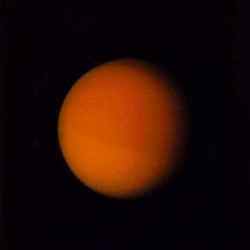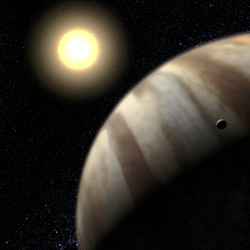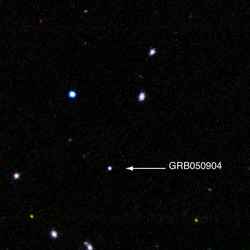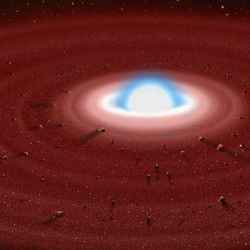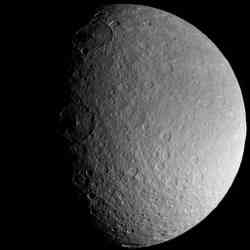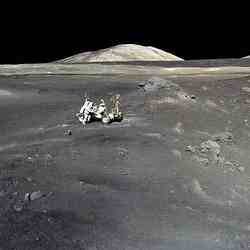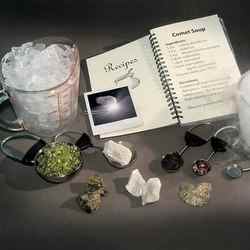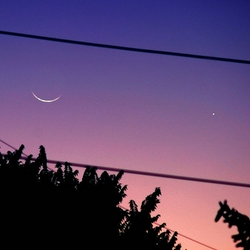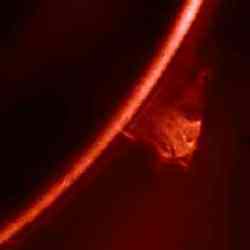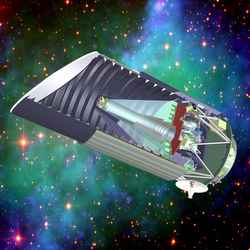
The SuperNova/Acceleration Probe, SNAP. Image credit: Berkeley Lab Click to enlarge
Listen to the interview: The Fate of the Universe (6.2 MB)
Or subscribe to the Podcast: universetoday.com/audio.xml
Fraser Cain: Can you lay out the two fates that may await our Universe?
Eric Linder: Well, our picture of what the fate of the Universe is has really changed dramatically in the last 5-10 years. We used to think it was fairly simple, it was just a matter of how much content there was in the Universe, how much matter there was. If there was enough matter, then the gravitational attraction would cause the Universe to slow down in its current expansion, and to basically re collapse and we’d have what some people call a Big Crunch to end our Universe. And if there was not enough matter, there would not be enough gravity to slow down the current expansion and it would just become more and more diffused – a colder and lonelier place to live in. In 1998, these two groups of scientists discovered a very bizarre occurrence that the expansion of the Universe was not slowing down either dramatically or even gradually, under the gravity of the matter in the Universe, but rather, it was speeding up. It was accelerating. Sort of like if you threw a baseball up in the air you know eventually it’s going to slow down, reach a peak, and usually come down back to Earth. If you throw it hard enough, it’ll go off into orbit. But here the Universe threw a baseball up in the air, and now that baseball is speeding away faster and faster. So this has completely puzzled scientists, and was completely contrary to what we were expecting. Under this new picture, the fate of the Universe appears to be that it is going to simply expand forever and ever, become colder, more diffuse, atoms will get more and more spread out, the distance between galaxies will increase. And we’ll have this fate of the Universe which is sometimes called the “Heat Death”, where everything just becomes very cold and motionless and isolated from each other.
But it depends on what’s causing this acceleration. That’s the great mystery. It’s possible that the physics giving us this acceleration could suddenly go away, in which case we’d be back to the earlier picture where the Universe might collapse. Or it could do something completely bizarre and we don’t know. So this is a big question that we want to find out. What is the fate of the Universe, but trying to figure out, what is the physics in this acceleration.
Fraser: Why has that question not been answered so far? Have we not gotten a good enough look at the supernovae?
Linder: Right, as I said, the acceleration of this expansion was only discovered in 1998. And people haven’t been sitting on their hands, they’ve been trying to answer this question very passionately. By getting more supernovae, we can use these exploding stars sort of like fireworks off in the Universe. If we know that the fireworks always go off with the same energy, with the same brightness, we can tell how far away they are by how bright they appear to us today. And so we need more of these supernovae, and we need more and more distant ones, so we can map the history of the Universe; the expansion of the Universe over a greater period of time. And people are gradually doing that. There are some very large projects underway with telescopes on the ground attempting to get what were just tens of supernovae, now we’re trying to get hundreds of supernovae. But eventually, to really answer these fundamental questions, we’re going to need thousands of supernovae at great distances. In order to get that, we’re going to need observations from space, so currently we have one space telescope – the Hubble Space Telescope – that is suitable for these sort of observations, and it’s doing a great job. It’s seeing the most distant supernovae that we’ve yet discovered; about 10 billion years out in the history of space, but it can only see them one by one. And so what scientists have proposed is that we build a new space observatory, a new telescope in space, called SNAP (Supernova Acceleration Probe), and this will be able to get thousands of supernovae very efficiently, very rapidly, seeing them extremely faint and extremely deep. And this has really caught the imagination of the science community. There have been a number of recommendations from the National Academy of Sciences, from various professional organizations, that some sort of space observatory like this will figure out: what is this mysterious physics causing this completely unusual acceleration that’s acting opposite to gravity? So there’s almost like a repulsive version of gravity that’s really going to rewrite all the physics textbooks. So a lot of people think that we really do need to go forward with these observations, more precise observations and many more observations, such as you spoke about. We just need to improve the data that we already have, and the technology is good enough that we can go out and do this. It just requires us to sit down and build the thing, and launch it and try to find out these answers.
Fraser: Now I’ve heard quite a few suggestions for what this dark energy might be. What kinds of things would you be looking for in your observations that could maybe map against some of those theories that have been put forward?
Linder: So the granddaddy of all concepts of dark energy was put forward by Albert Einstein all the way back in 1917, what he called the cosmological constant. And it didn’t agree with the observations at the time, and so it kind of went into retirement for a while. And every few decades, scientists brought it back out to say, well maybe that could explain some other observations we’ve made. And then it goes back into retirement because it doesn’t really fit. But now it seems this might be its time, to bring back this 90 year old concept from Einstein, because it can give this acceleration of the expansion of the Universe. It’s a very simple picture for how you could get this acceleration, but it doesn’t solve everything. There are some really very puzzling aspects of it. What you would think if you did some naive calculations is that it should accelerate the Universe, but should have started accelerating the Universe all the way back from the very first instant of time, and we would not have the Universe we see today if that happened. In fact, we would not have been able to get stars and galaxies and the structure that we see in the Universe. And so for some reason there has to be much much weaker than we would think as its natural value. So it’s possible that it’s the answer, but we don’t understand why it’s so weak, relative to what we think it should be. To get around that, people come up with these other ideas, this idea of quintessence, or a 5th substance to the Universe where it acts like the cosmological constant, but it varies in time, and so it can start off very weak and now today it can be dominating the expansion of the Universe. And so that’s an attractive idea, but nobody really has any first, basic idea of how to make it work exactly. Right now it’s a concept but the details haven’t been worked out on how it arises from the physics. So that’s another thing that we can be very interested in. Another possibility is the way we’ve been analyzing the data, saying, well, gravity is an attractive force, it’s given by Einstein’s Theory of General Relativity. Maybe something breaks down there. Maybe what we’re seeing is a breakdown in the theory of gravity as we understand it. People have come up with ideas that involve extra dimensions for example. Instead of just three dimensions in space, there might be an extra few dimensions in space, and that gravity is gradually sort of leaking out into this extra dimension in space and that’s making it weaker and that will act in opposition to gravity and give us acceleration. So we have all these incredibly exciting possibilities for how physics might change and we don’t know which they are. And so what we need are these very detailed observations of mapping the expansion of the Universe for example through the supernovae, these exploding stars – and there are other methods as well – to really try and decide, how are we going to rewrite the physics textbooks; which direction do we need to start erasing things in and writing new things in. So, it’s incredibly exciting for scientists who have puzzles facing them like this.
Fraser: When are these missions planned for launch? When should they be operational?
Linder: So NASA and the US Department of Energy have agreed to work together to put a mission into orbit. The general name for it is called the Joint Dark Energy Mission. And there are currently studies going on for how one would design such a space telescope. And we’re hoping that if enough public shows a strong interest, and the professional societies – like the National Academies of Sciences, which recommended such a mission. If they continue to support this, then we hope that we can go forward and launch it within about 6-7 years. So it’s very much possible that the students in school now will know the answers to things in 6-7 years that currently no professional scientist has the slightest clue for what the answer is. So it’s always very exciting to be able to tell students, and to be able to tell the public: you’re going to know things 6-7 years from now that we have no idea what the answer is right now. You’re going to be smarter in 6 or 7 years than we are right now. So it’s really an exciting endeavour to be in the middle of.
Fraser: And if you had your way, would it be fiery hot death, or cold freezing death?
Linder: I think the main thing I’d like is that it be far off. So we know the ends of the Universe are not going to be for at least 10s of billions of years – about the length of time that we’ve already had in the Universe – so it’s nothing we have to be concerned with overnight, but I don’t know what would be the best solution. You could argue that something like an overturning of Einstein’s Theory of Gravity and just a completely new framework of physics, and new territory to explore. That might be the most exciting outcome where you might have all sorts of different possibilities arising. But as you allude to, the fate of the Universe that really grabs our imagination, of everyone, from the scientists to school children.

